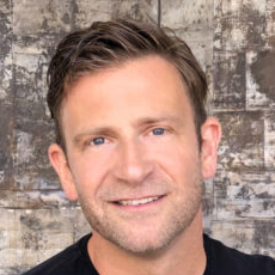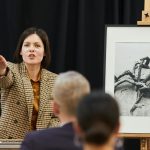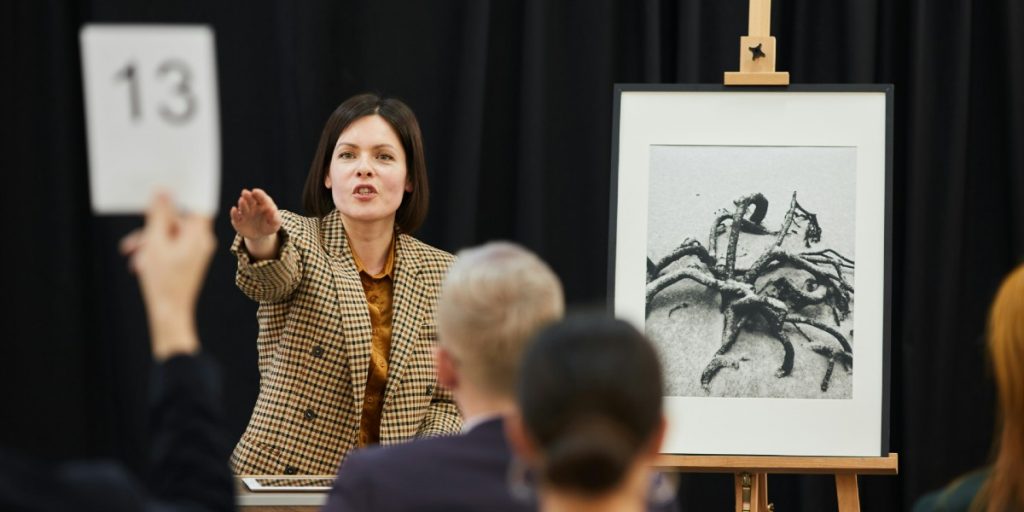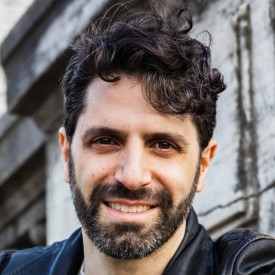Chase Jarvis is an award-winning photographer, Emmy-nominated director, founder and CEO of CreativeLive, and bestselling author of Creative Calling. He has crafted campaigns for Apple, Nike, and over one hundred other iconic brands. He also hosts the Chase Jarvis LIVE podcast.
What’s the big idea?
If you’re ever wondering if there’s more to life—there is, and it all comes down to a personal choice between mediocrity and excellence. We betray ourselves by playing it safe instead of authentically following the beat of our own drum. The tools for a vibrant life of creativity and sheer aliveness are within you, waiting to be excavated.
Below, Chase shares five key insights from his new book, Never Play It Safe: A Practical Guide to Freedom, Creativity, and a Life You Love. Listen to the audio version—read by Chase himself—in the Next Big Idea App.

1. Safety is an illusion.
Safety doesn’t exist in nature, and the pursuit of safety keeps us from feeling the most alive. Look into your soul for a moment. Think of the mind. You’ve got the head on your shoulders and the body you were born with. The heart that beats in your chest underneath all the products and the layers of everything that the world piles on you and that you pile on yourself.
Think about it deep down. Do you really believe that you were meant to play it safe? To stay in a little box defined by someone else? No. Deep down, you know it’s all risky, so why not go for it? You were built to be dynamic. You were built for challenge, change, and growth. You were built for a wild, rich, spirited, heartfelt, loving, and fascinating ride—not for safety.
When I say safety, I don’t mean seat belts and sunscreen. I don’t mean calculated risks or protecting your downside, and I don’t mean personal and emotional safety, both of which are essential to freedom and well-being.
The “playing it safe” I’m talking about is the kind that keeps most people living lives to a fraction of their potential. It’s playing small. It’s listening to the voice in your head that says, Who do you think you are to want something more? It’s sometimes delicately and other times blatantly hiding from yourself or perhaps even outright ignoring who you truly are and thereby limiting your own greatness. It is what keeps you stuck and betraying yourself.
2. Playing it safe is about fear.
Fear is only good for survival, not creativity, happiness, or joy. Playing it safe starts as a tiny self-betrayal, but just like an explorer who is off by just one degree on her compass, we end up a thousand miles from home. According to psychologist Dr. Nicole Lapper, she sees people in their twenties, thirties, and forties who played by the rules and followed the plan that society laid out for them, asking, is this all there is? That’s the tragic part of playing it safe. It’s insidious, like a double agent. We’re never sure if we’re compromised until it’s clear that we are.
I’ve lived on both edges of this sword, both as a victim and a conqueror of playing it safe. The signs started showing up for me in second grade, in Ms. Kelly’s class, to be exact. I was the proud creator of a weekly comic strip I published and sold at school, featuring my leading character, Clyde, who looked like a cross between Sasquatch and the ghosts from Pac-Man, but was a smart-ass like Garfield. I regularly did my own magic shows, complete with card tricks, a disappearing scarf, and a top hat. I had a standup comedy routine where my final joke was always, “What has 52 teeth and holds back a monster? My zipper.” I honestly had no idea what the punchline meant, but I distinctly remembered loving how it made any adult within earshot very nervous and visibly uncomfortable.
“We’re never sure if we’re compromised until it’s clear that we are.”
You could say I was a creative, quirky, happy kid, clearly going about my life to the beat of my own drum until the day Ms. Kelly told me I shouldn’t listen to that drum. She banned me from selling copies of my comic strip because it was a business and, therefore, wasn’t appropriate for school. And I received a hefty serving of disapproval for the magic show and the standup comedy routines.
I may have been just eight years old, but “surely I had better things to do,” she said to me and my parents. Even though I loved the adrenaline I got from getting up in front of an audience and sharing my creative gifts with the world, I gave it all up instantly. She was not so subtly signaling that there was something wrong with how I was. The sad part was that I immediately began to believe her. I was too young to understand that how I spent my time and energy shouldn’t have been up to her.
From that day forward, I stopped standing out and started fitting in. I even walked away from a dream career as one of the world’s top photographers to run a venture-backed startup because it was trendy, and people kept telling me it was the “next logical step” in my career. I also knew my decision would garner near-universal approval from my peers. These are just a few of the easiest self-betrayals to describe in a sentence or two. I made dozens, perhaps hundreds, of other such trade-offs in my careers, relationships, and other areas of my life where I willingly, even if unknowingly, swapped my authentic heart and soul for the tidy, well-worn ruts of others. What I see now is that I was living out of fear.
3. The best things in life are outside your comfort zone.
You may have lost sight of this along the way or even forgotten, but the opposite of playing it safe isn’t risk without measure—it’s freedom. It’s limitless potential. It’s betting on you.
Most of us want the same thing everyone wants because it’s what we see when we look around. As social animals whose safety and identity once came only from tribes, it’s easy to figure out how we ended up here. But once you see and understand this, you can’t unsee it.
It’s everywhere. This is partly why we love trailblazers in any industry or walk of life. We notice them and notice other people noticing them, and then we want to be them and be noticed by others. Evolutionarily, this is true and easy to understand because it is in being seen by our peers that we are less likely to be at risk of the tribe losing track of us, being left behind, or being eaten by a saber-tooth tiger.
The sad truth of this is twofold. First, mimetic desire is a waste because we are no longer likely to become a meal while walking to work. And second, this predicament considers absolutely nothing about what you might truly want for yourself or be capable of with this one precious life. A gold mine awaits the handful of us who become aware, break free, figure out what we really want, and remedy this orientation.
4. You already have the tools to create the life you want.
The life you want is about choosing between mediocrity and excellence. The idea of seeking discomfort and change without the right tools and proper training can be scary—until you realize that the tools you need naturally reside within you right now.
Whether you see it or not, you are brave, powerful, and wildly creative. After all, you’ve made it to this point, haven’t you? Therefore, your most urgent task is to excavate what has been buried deep inside you and learn to use those tools again because you have much more leverage over your own life experience than you think.
“The answer to our problems isn’t outside ourselves.”
Your task is to rediscover how to use these tools. You don’t have to start a revolution. You don’t have to quit your job, move to a different country, get new friends, or blow up your life. But to create the life you want, you do have to make a choice: between mediocrity and excellence, between what others want for you and what you want for yourself, between playing it safe and playing by your own rules.
This book is not about avoiding mistakes or making your life perfect. It’s about learning to trust yourself and return to your true nature over and over again, each time more quickly and wiser than before. This process is the ultimate creative act. The answer to our problems isn’t outside ourselves. We must turn inward for the solution.
Living cautiously won’t save us from missteps or losing ourselves. In aiming for a safer, more cautious life, we make different missteps and lose ourselves in arguably worse ways. Instead, our goal must be to live boldly, make mistakes, and use the tools that are naturally alive within us to learn and recover quickly. We don’t need to beat ourselves up or give up on where we were meant to go. We have to trust that we can and will right the ship.
5. We have two lives, and the second begins when we realize we have only one.
In hindsight, I realized there are essentially two modes of being. We are either growing or dying inside, in alignment or not, either playing for the love of the game or playing it safe. If we slow down and listen closely enough, we can always hear the whisper inside that ultimately leads us back to ourselves.
To listen to the audio version read by author Chase Jarvis, download the Next Big Idea App today:































